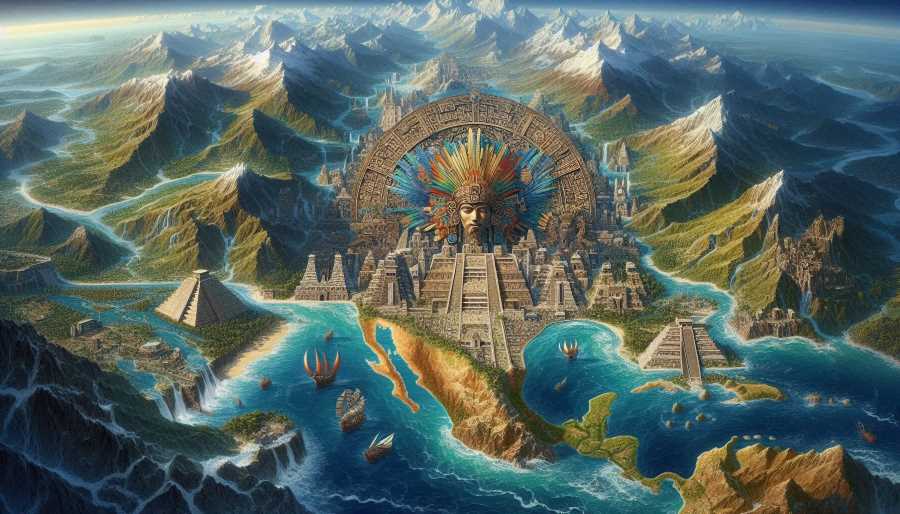Pyramid Builders, Sky Watchers, and Mountain Masters
Aztec, Maya, and Inca empires flourished in pre-Columbian Americas. Aztecs, known for their warlike nature, built a vast empire. Maya excelled in astronomy, math, and art, creating independent city-states. Inca, skilled engineers and administrators, ruled a vast Andean empire.

The 16th century marked a cataclysmic collision of worlds. When the conquistadors, those steel-clad harbingers of European dominion, first set foot on the shores of the Americas, they stumbled upon a reality as complex and magnificent as the jungles and mountains that cradled it. Two colossal civilizations, each a testament to human ingenuity and resilience, lay before them: the Mesoamerican and the Andean.
Mesoamerica, a verdant cradle of culture, was a mosaic of city-states linked by shared cosmologies, artistic traditions, and a complex understanding of the natural world. The Aztecs, with their imperial ambitions and intricate social hierarchy, cast a long shadow over the region. Yet, their achievements were built upon foundations laid by earlier cultures—the Olmec, the Maya, and the Zapotec, each leaving an indelible mark on the land.




